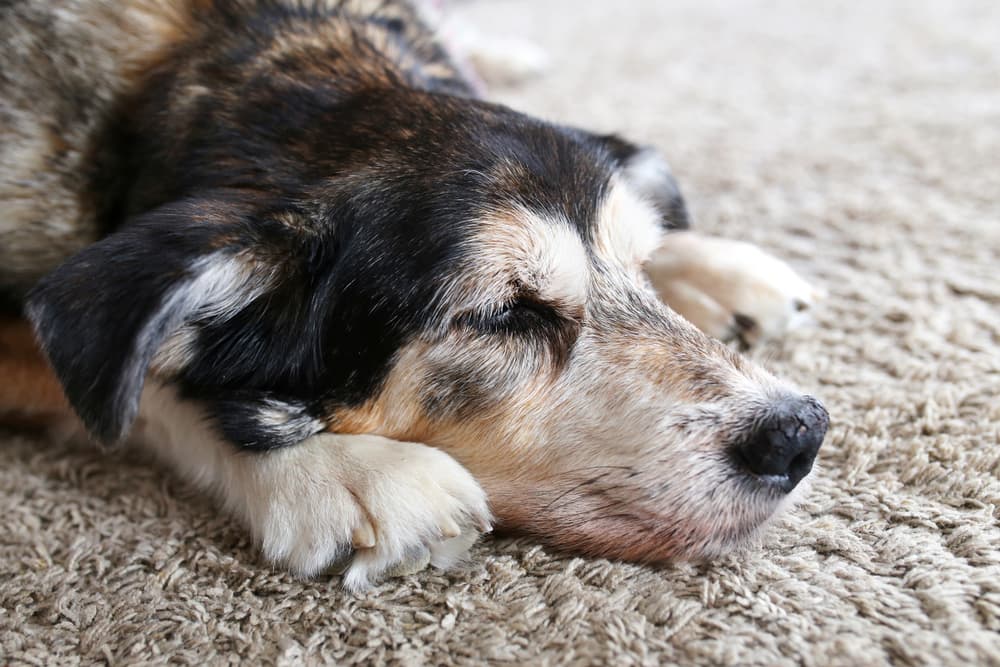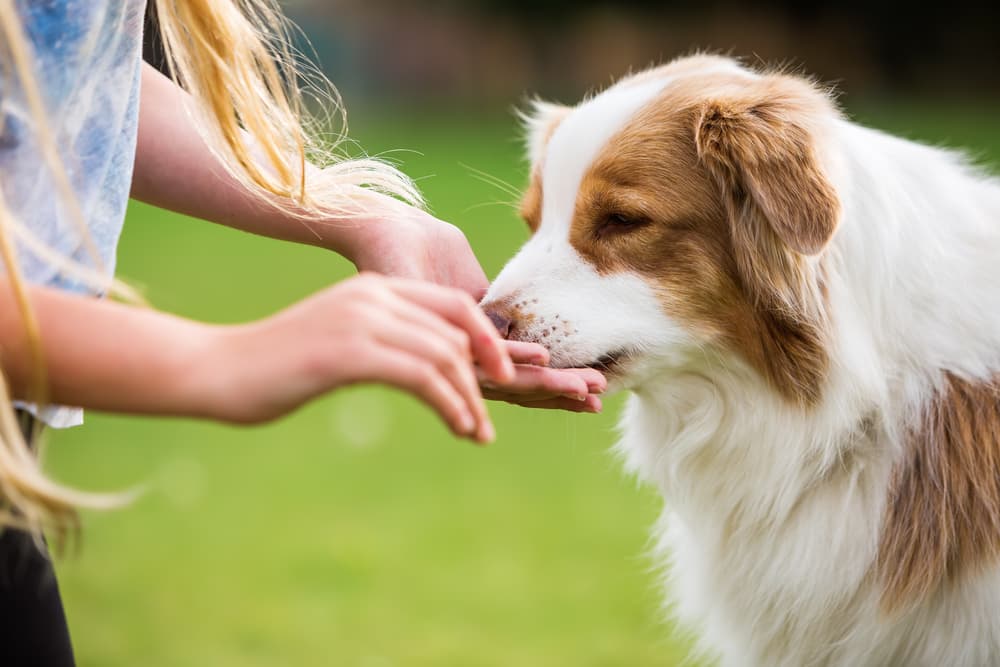Trilostane for Dogs

Medication details
- Medication type: Steroid analogue
- Form: Liquid, Capsule, Chew
- Prescription required? Yes
- FDA approved? Yes
- Brand names: Vetoryl
- Available dosages: Capsules: 20 mg; Chews: Various strengths from 8 mg to 100 mg; Liquid: Various strengths from 2 mg/mL to 120 mg/mL
- Expiration range: Brand name Vetoryl is shelf stable for 3 years. Compounded products have limited and variable stability.
If you’ve ever had a pet diagnosed with Cushing’s disease, you may have heard of a medication called trilostane. Although trilostane is no longer used in human medicine, it is still a mainstay of Cushing’s disease treatment in dogs.
If your dog is prescribed trilostane, there are a few unique aspects of this medication you’ll need to watch out for.
What is Trilostane?
Trilostane is a steroid analogue which blocks the production of cortisol, a steroid hormone that is overproduced in dogs with Cushing’s disease. It comes in capsule, liquid, and chew forms and is given to dogs by mouth.
Trilostane was FDA approved for the treatment of canine Cushing’s disease in 2008 and it is one of only two FDA approved treatments for this disease. Previously, trilostane was also FDA approved for the treatment of Cushing’s disease in humans, but it was pulled from the market in 1994.
What Does Trilostane for Dogs Treat?

Trilostane is used to treat hyperadrenocorticism, also known as Cushing’s disease. This condition causes your dog’s body to produce too much of the steroid hormone cortisol, which results in symptoms such as excessive drinking and urination, panting, lethargy, weight gain, excessive appetite, recurrent infections, and hair loss.
Cushing’s disease can impact your dog’s quality of life and can also make your dog more prone to developing other conditions such as diabetes mellitus, pancreatitis, urinary tract infections, and skin conditions. Fortunately, Cushing’s disease is manageable with trilostane treatment.
Trilostane is also FDA approved to treat Alopecia X, a characteristic pattern of baldness in thick-coated breeds such as Poodles, Pomeranians, Siberian Huskies, Chow Chows, and Samoyeds. Affected dogs are typically young adults and hair loss occurs on the trunk, neck, and the backs of the hind legs. The cause of Alopecia X is still poorly understood.
Trilostane Side Effects in Dogs
Trilostane can be tricky to dose and every dog responds to it differently. It is very important for pet parents to monitor closely for side effects. Finding the best dose of trilostane for your dog will often rely on your perception of your dog’s Cushing’s symptoms and any medication side effects you have noted at home.
Common side effects to look out for include:
- Diarrhea
- Lethargy
- Vomiting
- Weakness
- Lameness
- Urinary tract infections
- Blood in the urine
- Trembling or shivering
- Changes in the skin or coat
- Loss of appetite
Trilostane can be dangerous if overdosed, so be sure to follow your veterinarian’s dosing instructions carefully. Call your veterinarian right away if side effects occur.
Trilostane can also be dangerous to humans. The capsules should never be broken open, because the powder inside can irritate your skin and eyes. Always wash your hands after handling trilostane. Trilostane can also cause miscarriages and should not be handled by anyone who is pregnant or trying to become pregnant. If you must handle trilostane while pregnant, wear gloves and wash your hands immediately afterward.
Reactions with Other Drugs and Medications
Trilostane should be used with caution in dogs that are also currently receiving angiotensin converting enzyme inhibitors (ACE inhibitors) or potassium-sparing diuretic medications.
Dogs that have recently been treated with mitotane—another medication commonly used to treat canine Cushing’s disease—should wait at least one month after discontinuing mitotane before starting trilostane therapy.
Trilostane should also be used with caution in dogs with other medical conditions, such as liver and kidney disease. Follow your veterinarian’s guidelines.
Trilostane Dosage for Dogs

Trilostane is dosed based on your dog’s weight, so your veterinarian will calculate the best starting dose for your dog. In most cases, your dog will be started on a low dose and gradually increased until the best dose of medication is identified. This is the best way to ensure that your dog does not receive an overdose of the medication.
Your veterinarian will also ask you to closely monitor your dog’s symptoms. If your dog is drinking and urinating less, has a more normal appetite, and an improved energy level, these are all signs that the medication is working!
One to two weeks after starting trilostane, your dog will need to have a test called an ACTH stimulation test. This test helps your veterinarian assess whether your dog is on the correct dosage of medication. Once your veterinarian receives the results, he or she may adjust the dosage to better meet your dog’s needs. Your vet may also recommend checking blood work on your dog annually or semi-annually to ensure that your dog’s liver and kidney function are adequate, as serious side effects can occur if trilostane is given to animals with liver or kidney disease.
What If My Dog Misses a Dose of Trilostane?
If your dog has missed a dose of medication, don’t try to double up or administer the dose late. Just continue on with your regular dosing schedule. If your dog misses multiple doses, contact your veterinarian for advice on how to proceed.
Price of Trilostane for Dogs
Trilostane can be quite expensive because there is only one product available on the market. Pet owners should expect to spend anywhere from $50-$150 for a month’s supply depending on their dog’s dosage.
Compounded trilostane products are sometimes less expensive, but they can also be less effective and have a very short shelf life.
Your veterinarian can help you determine the best medication options to fit both your dog’s needs and your family’s budget.
Trilostane Storage Instructions
Trilostane oral capsules from the brand name Vetoryl are very shelf stable and can be stored at room temperature, approximately 77 degrees Fahrenheit. This product is typically stable for 3 years after packaging.
Compounded trilostane products are much less stable and may be less effective. They may also have their own unique storage requirements, so be sure to ask the compounding pharmacy for storage instructions.









